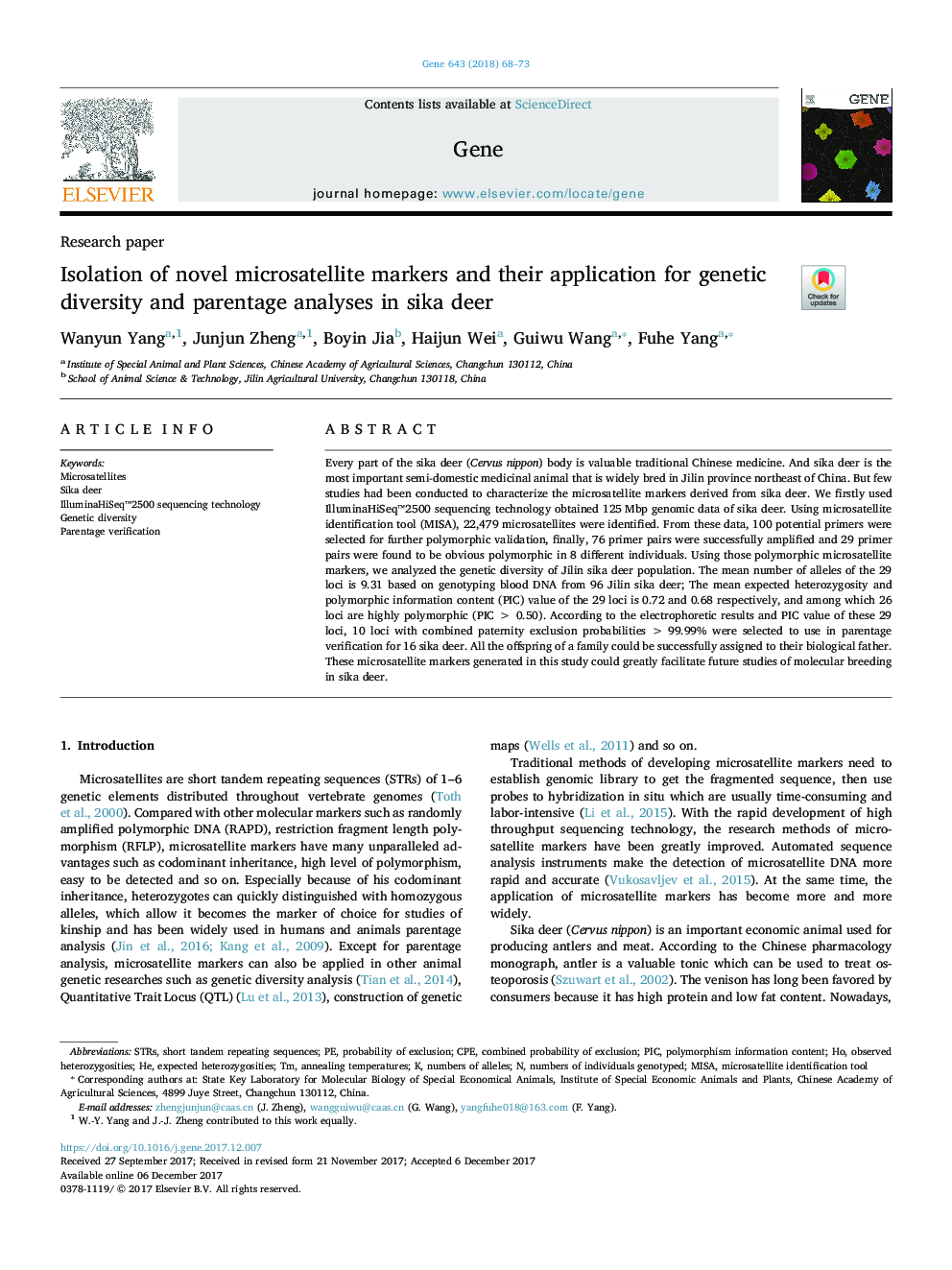| کد مقاله | کد نشریه | سال انتشار | مقاله انگلیسی | نسخه تمام متن |
|---|---|---|---|---|
| 8645803 | 1569793 | 2018 | 6 صفحه PDF | دانلود رایگان |
عنوان انگلیسی مقاله ISI
Isolation of novel microsatellite markers and their application for genetic diversity and parentage analyses in sika deer
ترجمه فارسی عنوان
جداسازی مارکرهای ریزماهواره جدید و کاربرد آن برای تجزیه و تحلیل تنوع ژنتیکی و تجزیه و تحلیل خانواده در گوزن سیکا
دانلود مقاله + سفارش ترجمه
دانلود مقاله ISI انگلیسی
رایگان برای ایرانیان
کلمات کلیدی
موضوعات مرتبط
علوم زیستی و بیوفناوری
بیوشیمی، ژنتیک و زیست شناسی مولکولی
ژنتیک
چکیده انگلیسی
Every part of the sika deer (Cervus nippon) body is valuable traditional Chinese medicine. And sika deer is the most important semi-domestic medicinal animal that is widely bred in Jilin province northeast of China. But few studies had been conducted to characterize the microsatellite markers derived from sika deer. We firstly used IlluminaHiSeqâ¢2500 sequencing technology obtained 125 Mbp genomic data of sika deer. Using microsatellite identification tool (MISA), 22,479 microsatellites were identified. From these data, 100 potential primers were selected for further polymorphic validation, finally, 76 primer pairs were successfully amplified and 29 primer pairs were found to be obvious polymorphic in 8 different individuals. Using those polymorphic microsatellite markers, we analyzed the genetic diversity of Jilin sika deer population. The mean number of alleles of the 29 loci is 9.31 based on genotyping blood DNA from 96 Jilin sika deer; The mean expected heterozygosity and polymorphic information content (PIC) value of the 29 loci is 0.72 and 0.68 respectively, and among which 26 loci are highly polymorphic (PIC > 0.50). According to the electrophoretic results and PIC value of these 29 loci, 10 loci with combined paternity exclusion probabilities > 99.99% were selected to use in parentage verification for 16 sika deer. All the offspring of a family could be successfully assigned to their biological father. These microsatellite markers generated in this study could greatly facilitate future studies of molecular breeding in sika deer.
ناشر
Database: Elsevier - ScienceDirect (ساینس دایرکت)
Journal: Gene - Volume 643, 15 February 2018, Pages 68-73
Journal: Gene - Volume 643, 15 February 2018, Pages 68-73
نویسندگان
Wanyun Yang, Junjun Zheng, Boyin Jia, Haijun Wei, Guiwu Wang, Fuhe Yang,
